


LOL
You have to see this [on the video]
Two-year-old moggy Milo was caught red-pawed by owner Jeremy Snell (pictured together, inset), 48, after he became concerned the thumb latches on his farmhouse doors were malfunctioning. Footage shows the crafty feline neatly jumping up to the latch and pulling it down with his paw, before dangling from the handle at the home in Stafford, in the West Midlands. Milo then drops to the floor to nudge the door open with its nose and moves on to a second door.

Milo has been using his skills to claim his favourite spot in front of the woo


Milo has been using his skills to claim his favourite spot in front of the wood-burning stove nearly a year (pictured), but his antics left his owner scratching his head

:) very clever.

https://www.bushlandperth.org.au/treasures/eric-singleton-bird-sanctuary/
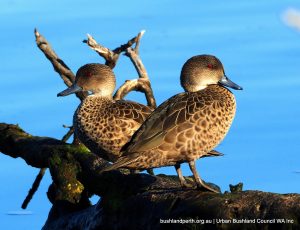
Major wetland remediation works were effected through 2015. The Reserve was closed during these works but the rehabilitated wetland was re-opened in November 2015. see project details below. These works have been extremely succesful; the growth of the plantings is nothing short of amazing. Eric Singleton Reserve is now a fully functional ecosystem. The birds are back!
Eric Singleton Reserve Snapshot
Eric Singleton Reserve is a constructed urban wetland located in Bayswater, approximately 8kms from the city and is very easy to get to. It lies at the end point of the now highly modified Bayswater Brook as the latter enters the Swan River.
It was named after a local bird enthusiast and long time resident in the area, Eric Singleton. Eric was successful in having the wetlands officially recognised in the 1970s. It is one of a network of wetland reserves in the City of Bayswater.
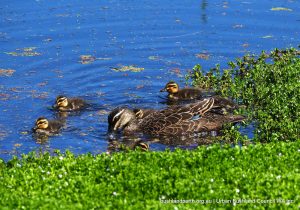
The Sanctuary is home to many different birds including ducks, pelicans, white faced herons, swallows, honeyeaters, reed dwellers and hawks. At dusk, hear the raucous laughter of kookaburras and the croaking frogs. During springtime, ducklings are always a treat to see.
Take a leisurely stroll around the lake. The Eric Singleton Bird Sanctuary is adjacent to several parklands including the Riverside Gardens and is a good place from which to explore further afield.
Walk down to the banks of the Swan River along Strand Street through Riverside Gardens and you will see a cycle path to Guildford. Cycling to Guildford makes a great day trip to explore Perth and surrounds”.
Picnic facilities at Riverside Gardens are excellent with plenty of picnic tables, BBQs and shady gazebos along the grassed areas. On the opposite side of the Swan River are the Ascot Racecourse and the adjoining suburb of Redcliffe. The dog beach is always a popular spot for locals and their pooches. Note: Riverside Gardens is dog friendly. However, the Eric Singleton Bird Sanctuary is a ‘no-dog’ zone.
The Restoration Project
The Sanctuary covers approximately 4 hectares. It was a seasonally wet depression which was drained in the 1950’s. Since then it has been dramatically altered to become a permanent wetland. The surrounding land was used for landfill between 1972 and 1981.
Like many Perth landfill sites, the site has now been landscaped into a public open space. Prior to the 2015 works, the ESBS wetland was artificially recharged, via a bore, with groundwater during summer in an attempt to maintain wetland functions. However, despite this, the ESBS wetland had limited ecological value and by 2014, before reconstruction it was characterized by:
• Unsustainable groundwater extraction;
• Poor ecosystem services and ecological value including a declining bird population;
• Formation of around 9,800m3 potentially monosulphidic sediments; and
• Poor wetland water quality with high levels of nutrients and heavy metals, pH and dissolved oxygen levels were routinely outside of healthy ranges.
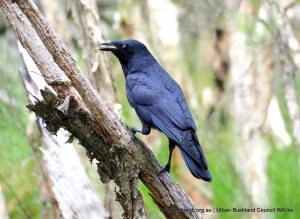
The project objectives were to address both problems in a single project that both restored a degraded wetland and improved water quality entering in the Swan River from the Bayswater Brook Catchment. The result was a $3 million civil re-construction of the ESBS wetland which was the City’s keystone environmental project, completed in 2015 in partnership with the DPaW.
The project will prevent 1.35 tonnes of nitrogen, 200 kg of phosphorous, and around 40 tonnes of sediment and other rubbish from entering the Swan River each year. This is approximately one third of the catchment’s target nutrient reduction.
170,000 native plants have been planted. In total 17 wetland and 9 dryland species endemic to the region were plants including Schoenoplectus validus (River Club Rush), Baumea articulata (Jointed Twig Rush) and Baumea juncea (Bare Twig Rush) and a combination of selected tree and shrub planting. Further infill planting will occur over future years.
Bayswater City is currently working with the Department of Parks and Wildlife on further enhancements to visitor amenity such as signage, bird hides and boardwalks. The City will be seeking grant funding to support the staged implementation of these structures. Park benches have already been installed along the central groin.
For greater detail on the project, including engineering schematics and video clips, visit the City’s Eric Singleton Bird Sanctuary page.
Nearby Places
Gobba Lake lies within walking distance, 400m, across an open grassed field, to the east of the Reserve (refer to Googlemap below) and is well worth a visit with its easy access surrounding path with a number of excellent bird viewing vantages.
Also of interest near the Reserve are Halliday House on 114 King William Street and Ellis House at 116 Milne Street.
Halliday House (located within 100 metres of the Reserve to the north) was converted by the Bayswater Historical Society into a historical museum and is a treasure trove on the history of the local Bayswater area.
Construction on Ellis House (best reached via a short drive to nearby A. P. Hinds Reserve) first began in 1912 and the weatherboard building originally served the area as a local dairy. In 1995 the City of Bayswater restored the property which today is open to the public as a community art centre and gallery. (Source – City of Bayswater).


https://blackcockatoorecovery.com/
https://www.australiascoralcoast.com/trip-ideas/holidays-by-interest/bird-watching
Below just one of many photos of these birds at the birdworldkuranda site
https://www.birdworldkuranda.com/birds
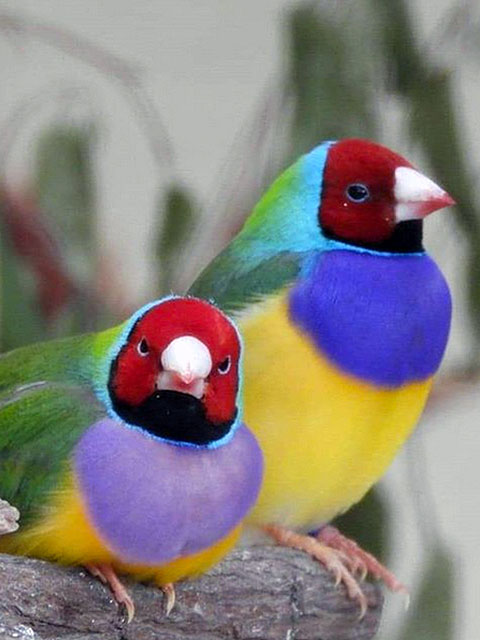
Gouldian Finch
The Gouldian Finch is native to Australia in tropical northern sub-coastal areas, from Derby (Western Australia) to the Gulf of Carpentaria and central Cape York Peninsula. They live in the tropical savannah, thickets and woodlands with grassy plains usually near water. Life expectancy up to 5-9 years.
http://museum.wa.gov.au/explore/blogs/katherine-veness/birds-under-threat-our-south-west
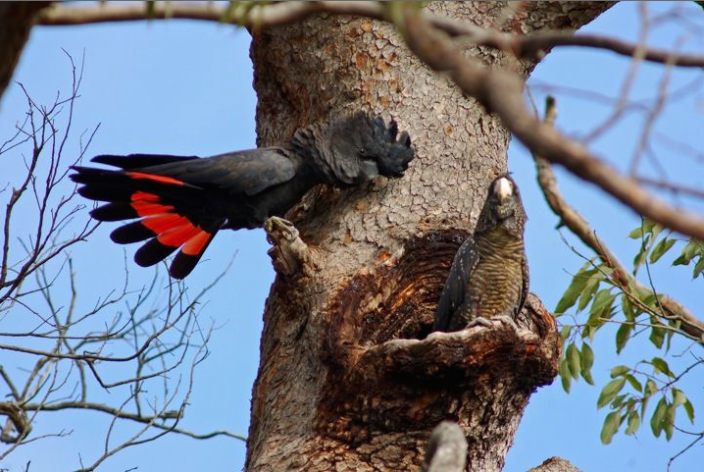

Lovely photos, thanks Celia.


Some great photos and articles, all caught up now, thanks

Thanks Incognito, yes there are some very good articles there some good information in them.

How upsetting, how can they??
Dog chained outside a Chinese meat store waiting to be butchered reaches out to a pedestrian with its paw before being rescued

The American Eskimo Dog, likely a stolen pet, was allegedly saved outside a dog meat store in north-eastern China's Jilin Province last October. It has lived with its new owner happily since then

Great to read at least one dog was saved.
The dog meat trade gives me the creeps, as does all their other "live animal market" practices.

One lucky sweetie, these horrible people are so detached from anything that is living, I see all animals the same, why I don't eat them, they are all sentiment beings with feelings and love.

The inspirational story of a brave tradie who drove 1,500km from Sydney to bushfire-ravaged Kangaroo Island to save the lives of 100 koalas using only his climbing gear
Sydney arborist Kailas Wild (left), 34, drove 1500km to Kangaroo Island to assist in the wildlife relief during the horror 2019-2020 bushfire season. Over seven weeks, he climbed up trees (bottom right) and coaxed down injured koalas (top right) to take them to an emergency wildlife hospital, saving more than 100 of the mammals.
And below a video of his antics!
What a big heart; on Australia Day we should have some acknowlegement of people that have done great things for our animals strike up a medal or something?


The 99th Koala by Kailas Wild is published by Simon & Schuster Australia and is available in bookstores from November 1

Yes these are the true heros, what a real man with a big heart to go with it. Will order that book from the library, thanks Celia. Very appropriate surname too.

http://www.bearsoftheworld.net/sloth_bears.asp




https://www.worldanimalprotection.org.au/news/sloth-slowly-climbs-forest-freedom




https://parody.fandom.com/wiki/Sloth_Bear
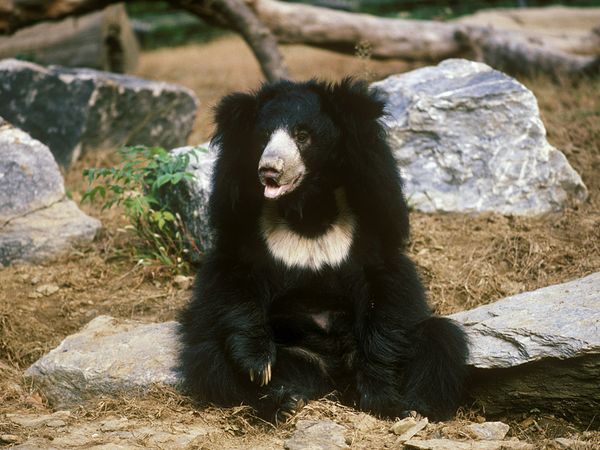

https://www.chimuadventures.com/blog/2016/10/wildlife-species-in-brazil/


Love sloths, so amazing, the way they move, such gentle creatures too.

https://www.lifegate.com/tapir-born-brazil-atlantic-forest
Brazil, a tapir is born in the Atlantic Forest for the first time in over a centuryA baby tapir © Eric Kilby/Flickr2 April 2020, by Lorenzo Brenna
The tapir was reintroduced into Brazil’s Atlantic Forest, the country’s most at-risk ecosystem. The species can play a key role in the forest’s recovery.
The tapir is an important species, crucial to its ecosystem because so many others depends on it. These strange, funny-looking creatures – the last remaining specimens of the Perissodactyla order – are thus able to literally shape the environment they inhabit. Tapirs ingest seeds from fruit and move over great distances, crossing different habitats and defecating along the way, thus dispersing the seeds. This allows for the flow of plant genes between habitats, especially the most degraded ones, as a study published last year highlights.
Their presence is extremely important, both in guaranteeing the preservation of flora and fauna biodiversity and contrasting the effects of climate change. In fact, tapirs ensure the survival of the largest trees (whose seeds can only be dispersed by larger animals), those with the highest carbon-storing potential. For these reasons, when a South American Tapir (Tapirus terrestris) was born in the wild for the first time in over a century, in Brazil‘s Atlantic Forest, one of the country’s most degraded ecosystems, the news was met with joy and jubilation.
 Tapirs are the largest land mammals in Brazil and can weight over 300 kilos. Over time, these large creatures have suffered a drastic population decline due to hunting and habitat loss. If they were to go extinct, the largest tree species with high wood density would be replaced by smaller ones, whose seeds can be ingested by more animals but whose carbon-storing potential is much lower © IngimageThe first “new” tapir in the Atlantic forest
Tapirs are the largest land mammals in Brazil and can weight over 300 kilos. Over time, these large creatures have suffered a drastic population decline due to hunting and habitat loss. If they were to go extinct, the largest tree species with high wood density would be replaced by smaller ones, whose seeds can be ingested by more animals but whose carbon-storing potential is much lower © IngimageThe first “new” tapir in the Atlantic forest
The calf was photographed thanks to a camera trap and was spotted in the Guapiaçu ecological reserve in the Atlantic Forest, not far from Rio de Janeiro. It’s thought to have been born in January, a testament to the efficacy of the reintroduction project which began eight years ago. The images also showed a female tapir that appears to be pregnant, so there could be another calf on the way.
Let tapirs go back to the forest
Since 2017, seven tapirs raised in captivity, four males and three females, have been reintroduced to the forest as part of the Refauna programme, led by a group of researchers at the Federal Institute for Education, Science and Technology in Rio de Janeiro. “The whole team is very happy,” says Maron Galliez, the biology professor leading the programme. “Now we know the project is heading in the right direction”.
 A study carried out in the state of Mato Grosso entitled “Lowland tapirs facilitate seed dispersal in degraded Amazonian forests” reveals that the South American Tapir (Tapirus terrestris) spends more time in damaged areas than in relatively intact forests. Seeing as it eats massive amounts of fruit, it leaves more seeds in these degraded areas, helping restore them more effectively and economically compared to traditional reforestation projects © Allan Hopkins/FlickrTapirs are like wolves and beavers
A study carried out in the state of Mato Grosso entitled “Lowland tapirs facilitate seed dispersal in degraded Amazonian forests” reveals that the South American Tapir (Tapirus terrestris) spends more time in damaged areas than in relatively intact forests. Seeing as it eats massive amounts of fruit, it leaves more seeds in these degraded areas, helping restore them more effectively and economically compared to traditional reforestation projects © Allan Hopkins/FlickrTapirs are like wolves and beavers
To explain the numerous positive effects caused by the reintroduction of tapirs, whose presence accelerates the recovery of degraded natural habitats, The Guardian aptly compared these animals to wolves in Yellowstone and beavers in the United Kingdom.
The reintroduction of wolves to Yellowstone National Park in 1995 radically changed the environment’s appearance and physical geography; among other things, it favoured a decrease in deer populations and consequent increase in vegetation, with cascading benefits for the entire ecosystem. A comparably fast and extraordinary environmental recovery is happening at the moment in the UK where, beavers have been reintroduced after centuries of absence. Thanks to their engineering prowess these large rodents have had a positive impact on vegetation and on many species of wildlife as well as water quality. They have even contributed to reducing the risk of flooding.
Saving a degraded forest
In a similar manner, the return of tapirs could favour the restoration of the Atlantic Forest, an enormous wooded area that used to cover over a million square kilometres along the eastern coasts of Brazil and Argentina. For decades, deforestation has impoverished and segmented the forest and the expansion of urban settlements has drastically reduced its size.
Even in its fragile state, this ecosystem is still important to the globe because of the vast quantities of carbon it can store. It’s also home to an amazing variety of wildlife, including jaguars, whose numbers are finally increasing. The tapir could be an essential addition to this biodiversity after having disappeared completely from Rio de Janeiro state in 2014. “The birth of a tapir in the wild points to the establishment of a population in the state,” Galliez explains. “This is crucial to restore the ecosystem’s proper functioning”.
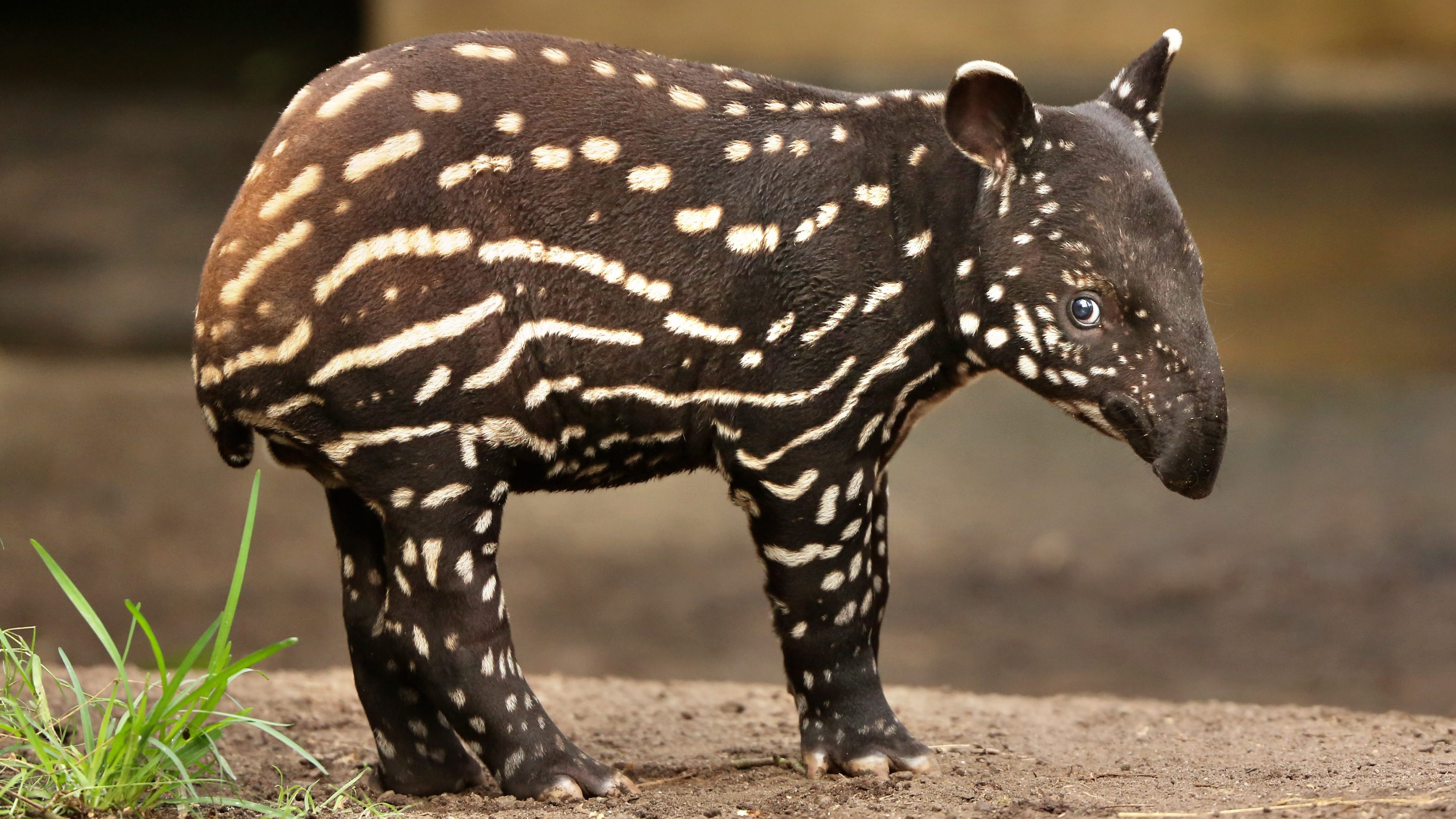
Love the way he is looking at the camera!

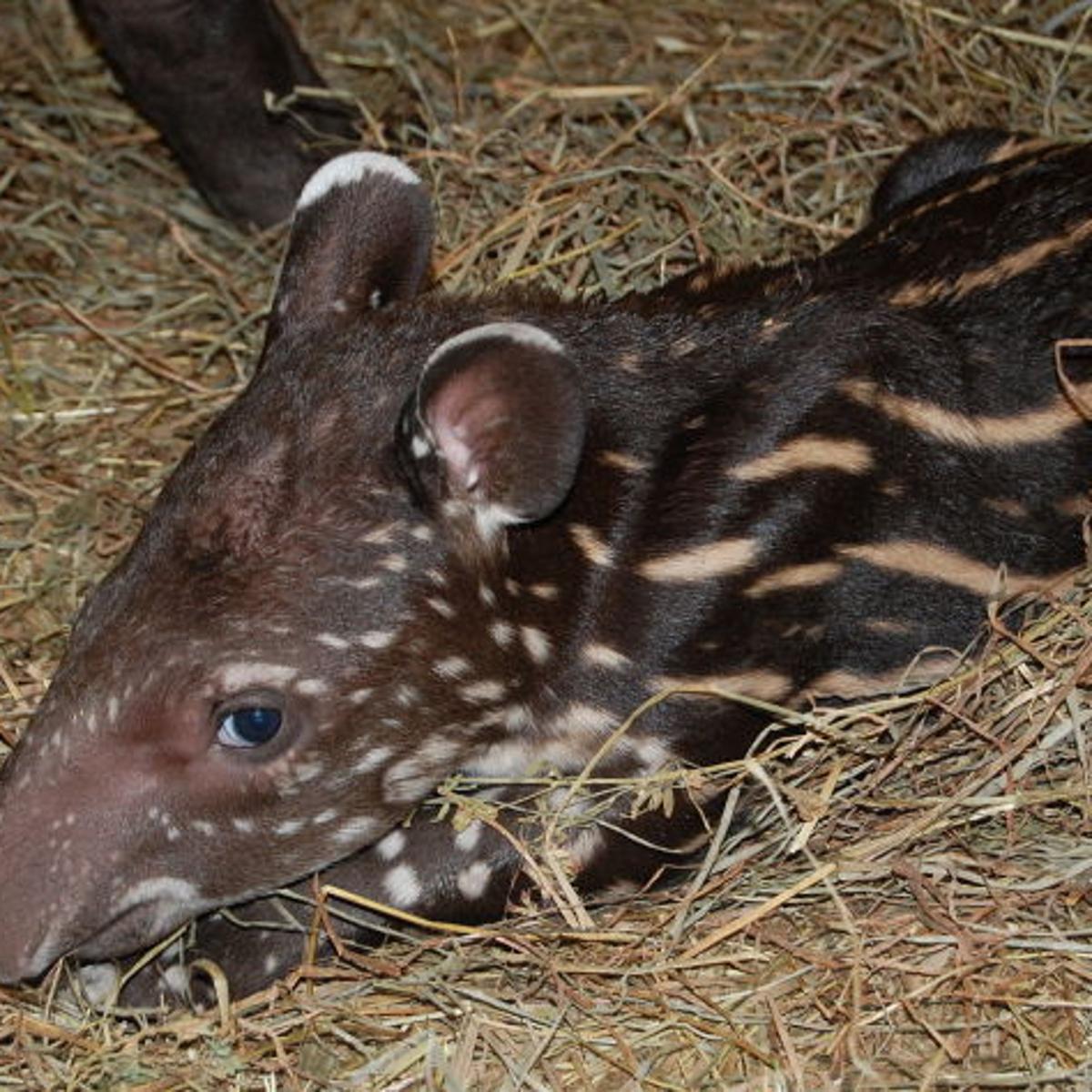
https://www.fotawildlife.ie/blog/stripes-at-fota-this-spring-as-they-announce-new-baby-brazilian-tapir


How amazing are the babies, never knew they had such vibrant patterns. Very interesting about how important they are to the environment too. Humans have sure caused such an imbalance to nature.





